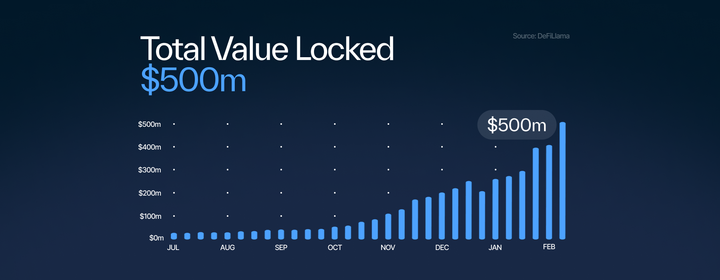Build Beyond: Designing the Right Incentives
A conversation with Mysten Labs’ Chief Economist Alonso de Gortari on Sui’s economic design

Last week we spoke with Alonso de Gortari, Chief Economist at Mysten Labs, about finding the right balance of incentives for network operators and participants and how Sui’s economy continues to evolve.
What interested you in applying your economics background to blockchain and Web3?
Originally I was an academic studying international trade. I focused on global value chains, which is basically another way to say international supply chains. But I wanted to get more hands-on with my work. Academia is all theoretical. I wasn’t building an import/export platform or some other product. I wanted to apply my ideas. And blockchain is actually quite relevant to supply chain management. In today’s world, there are very few ways to transparently track the manufacturing process that makes up the products we use everyday. The iPhone may be designed in California but we all know it is assembled in China from materials and parts sourced from all over the world. Blockchain is immutable and is therefore a valuable way to record the collection and assembly of any end product. The technology felt compelling, and instead of sitting in an old dusty office looking at it from the outside, I thought it more fun to jump in and get my hands dirty trying to build the product directly.
Can you describe the decisions required to design Sui's tokenomics?
Blockchain economies are a perfect marriage of theory and practice. Just as the engineering needs to be at the cutting edge, so does the economics. Tokenomics is the balance of incentives for the three key economic players on any chain: operators (or validators in our case), token holders, and users. Validators are interested in earning money from gas fees for operating their node. As such, they want high gas fees. Users want to use the blockchain and, as in any other product or service, want it to be cheap, so they want low gas fees. Token holders want to either stake their tokens to secure the network and earn rewards or use their tokens to pay gas fees and as such are somewhat caught in the middle. They want their tokens to appreciate in value and for people to use the blockchain because they believe in the product. So they, along with users of apps and products built on Sui, have an interest in low gas fees but at the same time want high gas fees so the network can be sustainable from an operational standpoint. Ultimately, it’s about getting gas fees just right and striking the balance between everyone’s interests.
So when designing a blockchain it is critical to find the appropriate alignment where everyone’s interests are met without preferencing any one party. It is critical to ensure validators can maintain a solid business while users and token holders can afford to participate.
What are the key innovations in tokenomics on Sui?
Sui’s gas price design is unique and based around a few key elements. First, Sui is horizontally scalable, meaning validators can increase blockspace (i.e. supply) at times of high demand, allowing gas fees to remain low. On other blockchains supply is fixed so gas fees will spike across the network when demand increases because there is no other regulating force. If the amount of blockspace is fixed, then the only thing that can happen when demand increases is for prices to shoot up. In contrast, on Sui, blockspace is variable. Because of horizontal scalability, supply can scale up in tandem with demand increases so that the price of using the blockchain remains fixed even when the network’s use also increases. Overall, when validators scale up their costs go up, but since validators also earn more by processing more transactions their bottom line is unchanged and they don’t need to increase prices to compensate for their costs.
The reference gas price creates transparency, predictability, and price pressure in the market. Every validator has to share what fee they are willing to accept to process the transaction. The reference price will then be set at the point where two-thirds of the validators would willingly operate as that ensures network security. Competitive markets are a critical component of this design, since validators need to operate sustainably, this creates a floor on how low gas fees can fall. At the same time, because the network’s operations are permissionless and anyone can run a Sui validator, this puts a ceiling on gas fees. If validators set gas fees at too high a level and made a lot of profits, new validators would come in to undercut them and reap those profits themselves. The market works elegantly, like Adam Smith’s invisible hand; market forces shape prices so that gas fees are just right. Not too high, not too low.
Another is the storage fund. As a blockchain is immutable, anything that is stored on it needs to be able to be stored forever. On most blockchains, that can be very expensive for certain types of data, such as JPEGs. And so a lot of data isn’t actually stored directly on-chain. But with Sui, block space is more of a commodity than a luxury. The issue is no longer how much it costs to store data but who is responsible for paying those fees. It didn’t seem reasonable that validators and full nodes that come onto the network in the future should have to bear the brunt of storage decisions made in the past. Especially because in such a world, these costs would be passed on to future Sui users. As economists like to say, if current Sui users store data and leave it unpaid for, they create a negative externality for future users who will be forced to cover those costs. This is unfair and, more importantly, leads to unsustainable network financials in the long-run.
Sui resolves this negative externality by making users pay for storage fees upfront and in perpetuity. The storage fund holds these fees, adjusts the stake rewards accruing to validators proportionally, and thus compensates validators for their storage costs. In addition, if the entity that originally stored the data determines it is no longer necessary then it can be deleted and a majority of the original fee is returned as a rebate. You end up in the best of both worlds, Sui has a financially sustainable storage model and it encourages folks to only use storage if they truly value it.
People often talk about certain network economies being inflationary or deflationary. Can you describe what that means and how it applies to Sui?
I believe that these terms are not always used correctly in many crypto circles. People often say that a chain is inflationary if the token supply continually increases and is deflationary if it is capped or decreasing. But inflation and deflation is not just about the token supply or tokens in circulation. It is about the level of network activity in relation to available tokens. A network whose on-chain activity increases faster than the amounts of new tokens in circulation will have pressure for decreased gas prices (i.e. deflation) to allow each token to be used for more transactions. An active network with plenty of tokens available will have pressure for higher gas prices (i.e. inflation).
Early on in the design of Sui, the token supply was capped. Only a small percentage are currently in circulation, with the rest being unlocked on a predetermined release schedule. In the long-run, the full SUI token supply will stand at 10 billion tokens. It is this transparency and predictability that can help inform interested parties about the state of the Sui economy. The goal is consistently increasing network activity and whether or not Sui is inflationary or deflationary depends upon the rate of that growth in comparison to the unlocking of tokens. The upside of this approach is that it removes anyone’s ability to influence the monetary rule, which in this case is capped in the long-run, and thus provides the market with certainty as to what the long-run tokenomics look like.
How do you see the Sui economy evolving in the future?
Mainnet is still very young. Sui’s tokenomics will need to adapt to the use and development of the network just like the technology itself does. For example, Sui has recently seen some issues around storage arise which may require tweaking the design of the storage fund. This is the fun part, where the rubber meets the road and the theories are put to the test. The goal of Sui’s tokenomics remains the same: getting everyone’s incentives aligned to lead down a single path for a thriving network.



